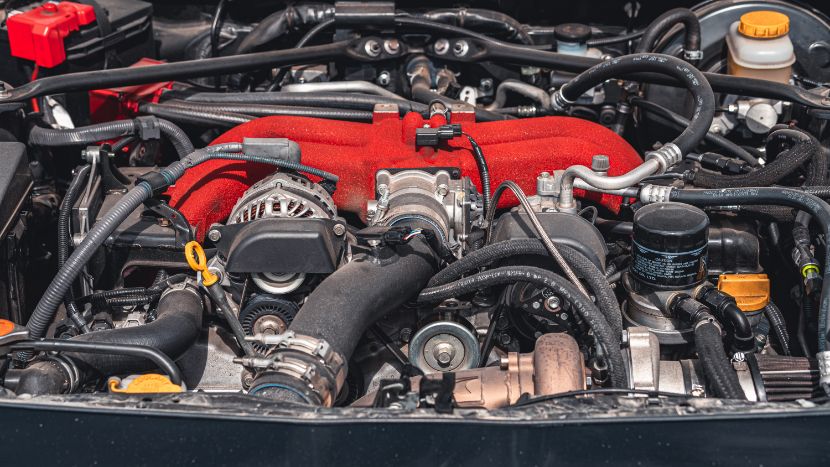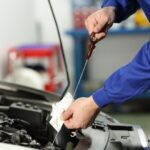For a car to run well, the engine must be cleaned regularly. But people may question, “Will water harm the engine’s parts?” Cleaning with a waterless engine cleaner is much safer even though there is a chance of water damage when not done carefully.
When using the right cleaner and microfiber cloth, you can clean your engine without using any water. Just be certain to clean the area and get rid of any debris. In many ways, maintaining your car’s engine without water is advantageous because it prevents corrosion and electrical component damage.
Read this article to discover how to thoroughly clean a car’s engine without using water.
Should You Use Water To Clean Your Engine Bay?
Although you can wash your car with water, is it really necessary to do so? While water is excellent for removing loose dirt and debris, it can also be problematic.
Water is a potential source of corrosion and rust, for starters. Make sure to completely dry off your engine bay after cleaning it with water. If not, you might discover that your engine’s parts rust and corrode much more quickly than they otherwise would.
Electrical issues may also result from water. Any water that enters the electrical system could short out parts and lead to a variety of problems. Consequently, if you choose to use water to clean your engine bay, you must take great care to avoid getting any water on any exposed electrical components.
To clean your engine bay, it’s generally best to stay away from using water. There are alternative cleaning methods that are less problematic. If you must use water, use extreme caution and make sure to completely dry the area afterward.
You may be interested in What Causes Engine Overheating.
Why You Should Clean Engine Bay Without Water?
You should dry-clean the engine bay for a variety of reasons. Any car engine can be cleaned without using water. engines resembling a corvette, a c5 corvette, a classic, and so forth. Here are some reasons why you should clean the engine bay without water:
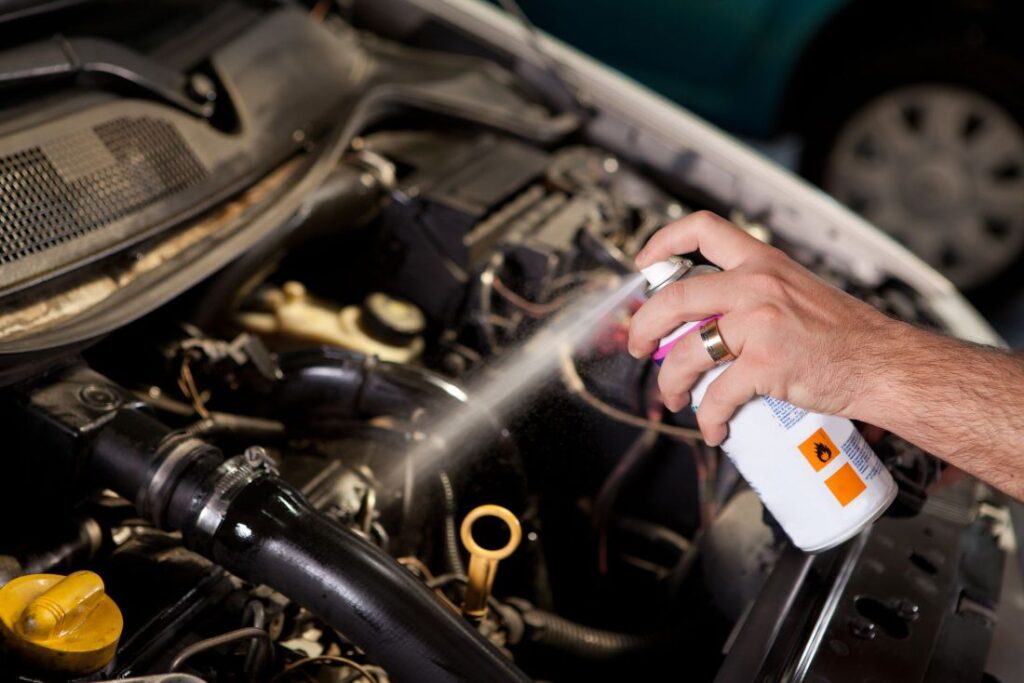
Water Could Damage Engine Component
Yes, water could harm a part of your engine. Your car may not be able to start if the engine has too much water in it. The engine is the most crucial component of a car, as you are aware. The engine provides power to run the entire vehicle.
However, nothing to worry about if you clean the engine without water. It is therefore safe to clean an engine without using water.
Access To Water And Washing Place
You need water and a place to wash your car if you want to wash the engine with water. This may be a problem if you don’t have that location.
Local Environment
You probably don’t want to criticize the neighbor for having too much water nearby. Water in excess could have an adverse effect on your neighborhood. Therefore, another justification for cleaning the engine bay without water could be the local environment.
How To Clean An Engine In A Car Without Water?
What You Will Need?
It’s simple to clean the engine bay without water, and only a few supplies are needed. They are listed below:
- Plastic bags – Even though water isn’t used in the procedure, you’re still using a liquid formula, so you still need to take care not to harm any delicate engine parts. Therefore, to protect those delicate components, you will need plastic bags.
- Engine Degreaser – You can clean the engine of your car without using water if you use an engine degreaser. Consequently, using it reduces the possibility that moisture will harm some of the engine parts in your car.
- Degreasing and cleaning wipes (optional) – These are a substitute for engine degreasers. They can enable you to clean your engine without using any water or scrubbing. With them, all you have to do is wipe the engine.
- Brush – A brush would be useful in conjunction with an engine degreaser to clean the engine of your car of grease and debris. Prior to cleaning with the engine degreaser or degreasing and cleaning wipes, you can also use this to first remove any loose dirt and debris.
- Microfiber Cloths – Microfiber cloths can be used to completely dry the engine of your car because they are incredibly absorbent.
Step 1: Wait For Your Car’s Engine To Cool Down
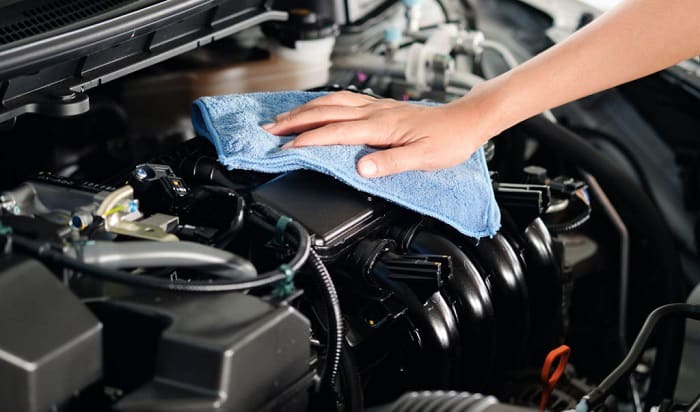
You must wait for the engine to cool down before cleaning it, especially if you have just finished driving. You wouldn’t want a hot engine to cause hand blisters. Additionally, a hot engine would quickly dry out the engine degreaser, preventing it from having time to work on the surfaces of the engine.
Step 2: Remove Any Loose Dirt And Debris Found On The Engine
In the course of time, the engine may become clogged with dirt and debris such as leaves, sticks, pebbles, and bugs. In order to apply the degreaser to the engine, you must first remove them. With the brush, you can remove them.
Step 3: Protect Delicate Components With A Plastic Bag
Every time you clean space with delicate components, it’s a good idea to take precautions. Even if you plan to clean your car’s engine compartment without using water, you should still exercise caution to prevent moisture damage to the sensitive components.
You must use plastic bags to protect delicate parts like the exposed electrical components and air intake because there will still be moisture from the formula.
Step 4: Apply Engine Degreaser On The Engine And Scrub Off The Grease
Spray the degreaser on the engine, making sure to cover every surface, after the engine has been protected with the necessary parts.
Allow the mixture to sit on the engine for at least a minute to give it time to work on the grease and dirt. The time has come to remove the grease and dirt from the engine after the degreaser has taken care of them.
Alternatively, you could use degreasing and cleaning wipes to remove the grease and grime from your car’s engine rather than using a degreaser and scrubbing. Use them only to clean the engine’s surfaces.
Step 5: Wipe The Engine Dry
Wipe the engine dry using some microfiber cloths, making sure to wipe every component and remove any remaining moisture. Additionally, look for any degreaser remnants in every area, especially under the hoses. An air compressor can also be used for drying, especially in challenging-to-reach places.
Step 6: Apply A Protectant On The Engine
Applying an engine protectant to the engine’s plastics and rubbers will give them more shine and additional protection than just a simple clean. Despite the fact that engine protectants typically come in spray bottles, you should avoid spraying the protectant directly onto the engine to avoid unintentional overspray. Applying it with a microfiber towel is the preferred method.
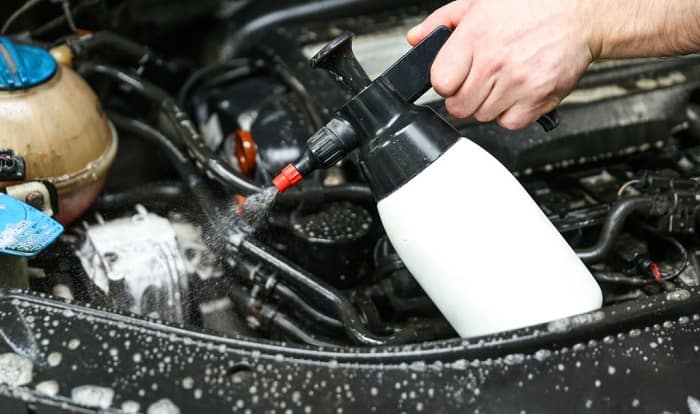
Step 7: Uncover The Delicate Components And Start The Engine
Uncover the components you covered when the engine is finally clean. Then, start the engine to check if it is operating correctly. Additionally, by removing additional moisture, the engine would be able to dry completely.
How Should I Dry The Engine Bay?
After cleaning your engine bay, make sure to completely dry it out. If not, the moisture could cause rust and other issues. Utilize a fresh microfiber cloth or towel to dry the area. To ensure that the area is completely dry, be sure to go over it several times.
To expedite the procedure, you can also use a tiny hand dryer. Use caution when using one that generates excessive heat because doing so could harm engine parts.
Frequently Asked Questions (FAQs)
How Do I Use Wd40 To Clean The Engine Bay?
The cleaning procedure is the same whether using WD40 or another degreaser. To protect the electrical engine component, use a plastic bag after thoroughly cleaning the engine bay and removing all of the debris. Run the engine after that and then spray the engine with a WD40 degreaser. Finally, wash and clean every part of your car.
Can You Power Wash The Engine Compartment?
Your engine bay can be pressure washed, yes. You can wash or clean your vehicle’s engine in a number of ways. A pressure washer or a hose can be used to clean the engine compartment. If you have cleaning supplies at home, you can even wash the engine bay of a car there. Spray some engine degreaser on them, then wipe them down with a soft cloth.
Are Engine Bays Waxable?
Engine bay waxing is never a good idea. Wax has the potential to damage delicate engine components. Use WD-40 or rust inhibitor spray to shield your engine bay from the elements.
Does Your Engine Bay Need A Power Wash?
Use a power washer sparingly when cleaning the engine bay. Both electrical issues and damage to delicate engine components are possible as a result of the high-pressure water stream. A soft brush should be used to remove any dirt or grime after using a garden hose to gently spray down the engine compartment.
Final Thoughts
When you follow the right procedure, cleaning the engine bay without water is simple. You should find out how to clean the engine bay without water if you want to prevent water damage to your car’s engine.
By using this technique, you can reduce environmental pollution, have a smoother, safer ride, and have a low risk of damage. In addition, it only requires a few easy steps to complete. But keep in mind to use caution because you’re working with delicate parts.

